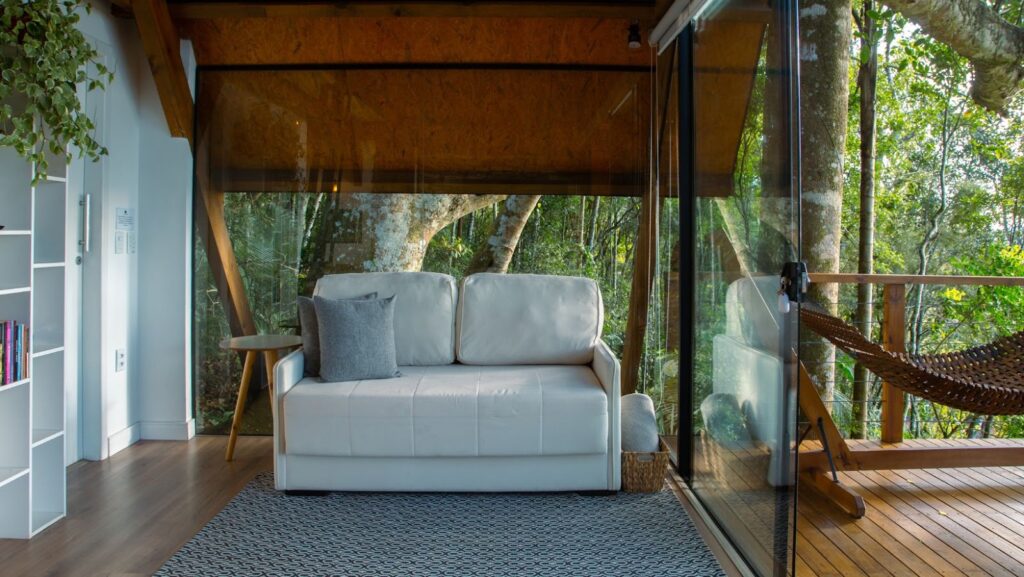In recent years, tiny homes have captured the imagination of those seeking a simpler, more sustainable lifestyle. These miniature marvels offer a unique blend of efficiency and coziness, challenging traditional notions of what a home should be. As more people embrace minimalism, the allure of tiny homes continues to grow, offering a compelling alternative to the sprawling spaces of conventional living. Inside a tiny home, every square inch counts. Clever design and innovative storage solutions transform compact spaces into functional and inviting environments. From multifunctional furniture to creative layouts, tiny homes demonstrate that small can indeed be mighty. These diminutive dwellings invite their inhabitants to rethink priorities and focus on what truly matters. Tiny homes are more than just a trend—they’re a testament to the power of ingenuity and adaptability. As the movement gains momentum, it’s clear that living large isn’t about square footage but the richness of experience and the freedom to live with intention.
Inside Tiny Homes
Inside tiny homes, every square foot matters. Designers prioritize multifunctionality and smart space usage to transform small into practical and cozy. Multifunctional furniture plays a crucial role in tiny homes. Designers create pieces that serve dual or even triple purposes. Examples include sofa beds that convert into sleeping spaces, tables doubling as storage units, and foldable desks for work or dining. These transformable elements ensure optimal use of limited space, combining functionality with comfort. Modular furniture also allows customization, adapting to evolving needs without needing more room. Tiny homes prioritize comfort without sacrificing functionality. Thoughtful climate control and lighting play pivotal roles in enhancing livability. Effective climate control is crucial in tiny homes. Mini-split systems deliver efficient heating and cooling, using less energy compared to traditional HVAC units. Radiant floor heating adds warmth evenly throughout the space, perfect for cold climates. Insulation quality impacts temperature stability; closed-cell spray foam offers superior protection against external temperature changes. Ventilation systems, like energy recovery ventilators (ERVs), maintain air quality while minimizing energy loss. Natural lighting maximizes the openness of tiny homes. Large windows invite daylight, reducing reliance on artificial lighting. Skylights enhance indoor brightness and allow for stargazing at night.
Essential Features of Tiny Home Interiors
Inside tiny homes, intelligent interior design is crucial for maximizing space and functionality. Key features include compact kitchens, space-saving furniture, and efficient storage solutions. Tiny home kitchens focus on efficiency, employing smart layouts to make the most of limited space. Appliances like combination microwave and convection ovens, under-counter refrigerators, and two-burner stoves save space. Custom cabinetry and pull-out pantry shelves optimize storage, accommodating cooking essentials without overcrowding. Fold-down tables and countertops add extra surfaces when needed, then tuck away to maintain an open area. Multipurpose sinks with cutting board covers provide additional workspace while concealing clutter. These designs prioritize functionality, ensuring a fully equipped kitchen in a minimal footprint.
Considerations for Building a Tiny Home
For those considering the transition to tiny living, it’s crucial to focus on thoughtful design and practical solutions. Embracing multifunctionality and efficient use of space can transform these compact dwellings into comfortable and inviting homes. Prioritizing energy-efficient systems and sustainable materials not only enhances livability but also aligns with eco-friendly values. Incorporating natural lighting and ventilation strategies can significantly improve the overall ambiance and air quality. Selecting adaptable furniture and smart storage solutions ensures that every inch serves a purpose, maintaining both functionality and comfort. Ultimately, tiny homes offer a unique opportunity to redefine living spaces by focusing on essential elements that contribute to a simpler, more intentional lifestyle. By valuing experiences over excess, individuals can create a home that truly reflects their values and aspirations. Popular shades include soft greens, warm browns, and muted blues, which complement natural materials. Innovative lighting solutions play a major role. LED strips and recessed lighting create ambient illumination without occupying physical space.

